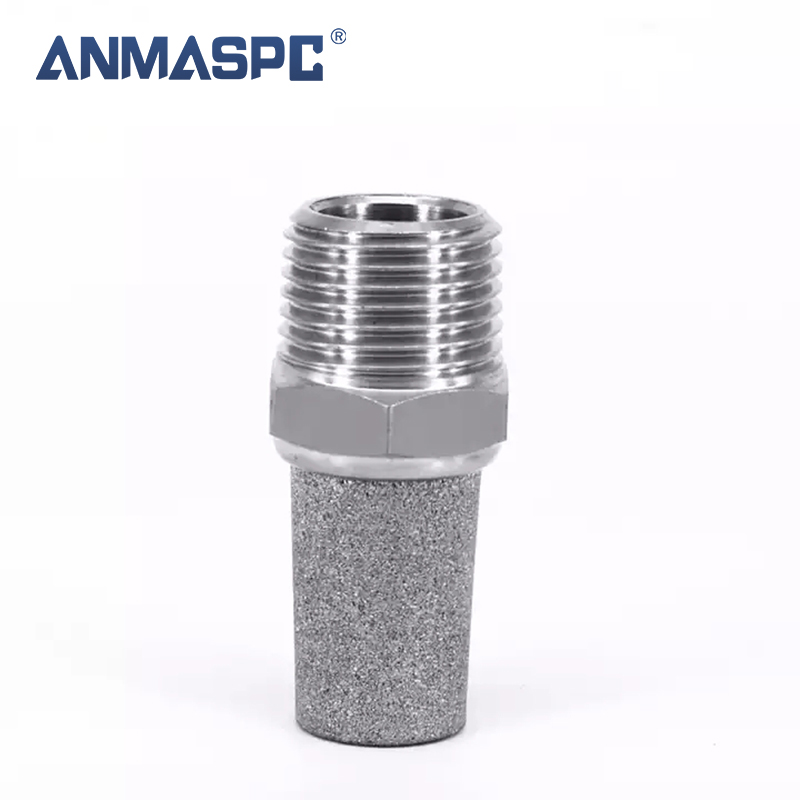- English
- Español
- Português
- русский
- Français
- 日本語
- Deutsch
- tiếng Việt
- Italiano
- Nederlands
- ภาษาไทย
- Polski
- 한국어
- Svenska
- magyar
- Malay
- বাংলা ভাষার
- Dansk
- Suomi
- हिन्दी
- Pilipino
- Türkçe
- Gaeilge
- العربية
- Indonesia
- Norsk
- تمل
- český
- ελληνικά
- український
- Javanese
- فارسی
- தமிழ்
- తెలుగు
- नेपाली
- Burmese
- български
- ລາວ
- Latine
- Қазақша
- Euskal
- Azərbaycan
- Slovenský jazyk
- Македонски
- Lietuvos
- Eesti Keel
- Română
- Slovenski
- मराठी
- Srpski језик
The Knowledge and patterns of Stainless Steel Silencer
2024-03-19
The Knowledge and patterns of Stainless Steel Silencer
Silencers refer to noise reduction devices such as pipes and elbows with sound-absorbing lining or pipes with sudden changes in cross-sectional area and other discontinuous acoustic impedance that can attenuate or reflect back the noise inside the pipeline for airflow pipelines with simultaneous noise propagation. The former is called a resistive silencer, the latter is called a reactive silencer, and there are also impedance composite silencers.

There are many types of silencers, but when it comes to their sound reduction mechanisms, they can be divided into six main types: resistive silencers, reactive silencers, impedance composite silencers, micro perforated plate silencers, small hole silencers, and active silencers.
Most of the existing silencers adopt the impedance composite silencing principle. Due to its complex structure, heavy weight, high-temperature oxidation sound-absorbing fillers, high-speed airflow impact sound-absorbing fillers, water vapor infiltration sound-absorbing fillers, etc., silencers are prone to frequent maintenance, poor sound-absorbing effect, and short service life. And this has always been a design difficulty for silencers, while micro perforated silencers have integrated the most reasonable sound reduction principles to solve the above problems and achieved good results. The micro perforated silencer does not use any resistive sound-absorbing filler and adopts a micro perforated small hole multi cavity structure. High pressure airflow enters the cavity through multiple controlled flows inside the silencer, gradually changing the sound frequency of the original airflow. Low resistance loss, wide noise reduction frequency band, and no dust generation during operation. Not afraid of oil mist and moisture. Resistant to high temperature and high-speed airflow impact.

Silencers are used to reduce exhaust pulsation and minimize exhaust noise as much as possible. The selection of silencers should be based on the requirements of fire prevention, moisture prevention, corrosion prevention, cleanliness, installation space location, noise source spectrum characteristics, natural sound attenuation of the system, regeneration noise of the system airflow, allowable noise level of the room, allowable pressure loss, equipment price, and other factors, and may be biased according to the actual situation. The general situation is that the greater the noise reduction of a silencer, the greater the pressure loss and price; When the noise reduction is the same, the smaller the pressure loss, the larger the space occupied by the silencer.
To measure the quality of a silencer, the following three aspects should be considered:
1. The noise reduction performance of the silencer; (Noise reduction and spectral characteristics)
2. The aerodynamic performance of the silencer; (Pressure loss, etc.)
3. The structural performance of the silencer. (Size, price, lifespan, etc.)
The frequency characteristics of a silencer. The anti spray type silencer has superior effects on various frequency noise· The applicable wind speed of a silencer is generally 6-8m/s, and the maximum should not exceed 12m/s. At the same time, attention should be paid to the pressure loss of the silencer· Pay attention to the net cross-sectional area of the silencer. When connecting the air duct to the silencer, it is necessary to enlarge it if necessary (when the wind speed is limited)· The installation of sound-absorbing equipment such as silencers must have independent load-bearing suspension rods or bases;

The sound source equipment must be connected through a soft joint· When two sound-absorbing elbows are used in series, the connection distance between the two elbows should be greater than 2.5 times the diagonal length of the elbow section· For environmental systems with high temperature, high humidity, oil mist, and water vapor, microporous structure sound-absorbing equipment is generally used. For environmental systems with cleanliness requirements such as operating rooms, recording rooms, and clean factories, microporous structure sound-absorbing equipment should be used· When adjacent rooms are connected by pipelines, attention should be paid to the mutual influence of indoor noise through the pipelines, and if necessary, the air vents should be silenced.





